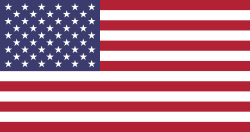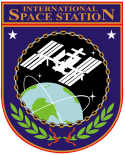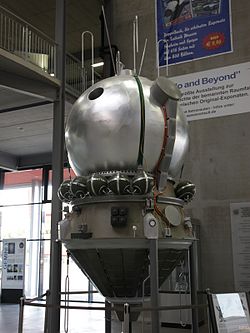STS-121
| STS-121 | |||||
 | |||||
| Uppdrag | 115 | ||||
|---|---|---|---|---|---|
| Rymdfärja | Discovery (32) | ||||
| NSSDC-ID | 2006-028A[1] | ||||
| Färdens tid | 12 dagar, 18 timmar, 37 minuter, 54 sekunder | ||||
| Uppskjutning | |||||
| Startplats | Startplatta 39B vid Kennedy Space Center i Florida | ||||
| Start | 4 juli, 2006 18:37:55 UTC | ||||
| Landning | |||||
| Landningsplats | Kennedy Space Center i Florida | ||||
| Landning | 17 juli, 2006, 13:14:43 UTC | ||||
| Omloppsbana | |||||
| Varv | 202 st[2] | ||||
| Apogeum | 231 km | ||||
| Perigeum | 158 km | ||||
| Banlutning | 51,6° | ||||
| Sträcka | 8,5 miljoner km | ||||
| Rymdpromenad | |||||
| Antal | 3 st | ||||
| Total tid | 21 timmar, 29 minuter | ||||
| Dockning | |||||
| Rymdstation | ISS | ||||
| Dockning | 6 juli 2006, 14:51:45 UTC | ||||
| Dockningsport | PMA-2 (Destiny, fram) | ||||
| Urdockning | 15 juli 2006, 10:07:51 UTC | ||||
| Tid dockad | 8 dagar, 19 timmar, 16 minuter | ||||
| Besättning | |||||
| Befälhavare | Steven W. Lindsey (4) | ||||
| Pilot | Mark E. Kelly (2) | ||||
| Uppdragsspecialister | Michael E. Fossum (1) Piers Sellers (2) Lisa M. Nowak (1) Stephanie D. Wilson (1) | ||||
 | |||||
| Kronologi Rymdfärjeprogrammet | |||||
| |||||
STS-121 var en rymdfärd till den internationella rymdstationen ISS som genomfördes med den amerikanska rymdfärjan Discovery mellan 4 juli och 17 juli 2006. Discovery lyfte från Pad 39B vid Kennedy Space Center 4 juli efter 3 dagars försening på grund ofördelaktigt väder.
Huvuduppdraget var att testa nya säkerhetsprocedurer som införts efter Columbias haveri 2003. Man levererade även utrustning och experiment till rymdstationen, detta gjorde man med hjälp av modulen Leonardo. Bland annat levererades och installerades till laboratoriet Destiny en 300 liters frysbox (Minus Eighty Degree Laboratory Freezer, MELFI) där man i sektioner kan lagra prover och annat i olika temperaturer.
Rymdfärjan landade vid Kennedy Space Centers Shuttle Landing Facility Runway 15 17 juli 2006. Landningen blev den 62:a för rymdfärjorna vid Kennedy Space Center. Landningen skedde på det 202:a varvet runt jorden.
Totalt tog uppdraget 306 timmar, 37 minuter och 54 sekunder.
Besättning

STS-121
- Steven W. Lindsey (4), befälhavare.
- Mark E. Kelly (2), pilot
- Michael E. Fossum (1), uppdragsspecialist
- Lisa M. Nowak (1), uppdragsspecialist
- Stephanie D. Wilson (1), uppdragsspecialist
- Piers J. Sellers (2), uppdragsspecialist
Vid uppfärden bestod besättningen av sju personer. ESA-astronauten Reiter lämnades kvar ombord på rymdstationen. Han återvände i december 2006 med STS-116.
Thomas A. Reiter (2), åkte med STS-121 upp för att tas ner på jorden igen med STS-116 i december 2006.
Väckningar
Under Geminiprogrammet började NASA spela musik för besättningar och sedan Apollo 15 har man varje "morgon" väckt besättningen med ett särskilt musikstycke, särskilt utvalt antingen för en enskild astronaut eller för de förhållanden som råder.
| Dag | Låt | Artist/Kompositör | Spelad för | Länk |
|---|---|---|---|---|
| 2 | "Lift Every Voice and Sing" | New Galveston Chorale | Stephanie Wilson | MP3 WAV |
| 3 | "Daniel" | Elton John | Thomas Reiter | MP3 WAV |
| 4 | "Good Day Sunshine" | The Beatles | Lisa Nowak | MP3 WAV |
| 5 | "God of Wonders" | Marc Byrd och Steve Hindalong | Mike Fossum | MP3 WAV |
| 6 | "I Have a Dream" | Abba | Mark Kelly | MP3 WAV |
| 7 | "Clocks" | Coldplay | Piers Sellers | MP3 WAV |
| 8 | "All Star" | Smash Mouth | Lisa Nowak | MP3 WAV |
| 9 | "I Believe I Can Fly" | Stephanie Wilson | MP3 WAV | |
| 10 | Tema från Charlies änglar | hela besättningen | MP3 WAV | |
| 11 | "The Texas Aggie War Hymn" | The Fightin' Texas Aggie Band | Mike Fossum | MP3 WAV |
| 12 | "Beautiful Day" | U2 | Mark Kelly | MP3 WAV |
| 13 | "Just Like Heaven" | The Cure | Piers Sellers | MP3 WAV |
| 14 | "The Astronaut" | Something Corporate | Steven Lindsey | MP3 WAV |
Se även
Referenser
- ^ ”NASA Space Science Data Coordinated Archive” (på engelska). NASA. https://nssdc.gsfc.nasa.gov/nmc/spacecraft/display.action?id=2006-028A. Läst 22 mars 2020.
- ^ Manned Astronautics - Figures & Facts Arkiverad 4 mars 2016 hämtat från the Wayback Machine., läst 28 juli 2016.
Externa länkar
 Wikimedia Commons har media som rör STS-121.
Wikimedia Commons har media som rör STS-121.
| ||||||||
| |||||||||||||||||||||||||||||||
| ||||||||||||||||||||||||||||||||
Media som används på denna webbplats

- The blue Shuttle rising above Earth's horizon includes the Columba constellation of seven stars, echoing the Columbia STS-107 patch and commemorating those seven crewmembers. The dominant element of the patch is the Earth, representing the unity and dedication of the many people whose efforts allow the Shuttle to return safely to flight. Against the nighttime Earth, the blue orbit represents the International Space Station, with the Shuttle crew spacewalk team named on the orbit. The red sun as the O in Noguchi signifies the contributions of the Japan Aerospace Exploration Agency to the mission and to the ISS program. The multi-colored Shuttle plume represents the spectrum of challenges for this mission, including Shuttle inspection and repair experiments, International Space Station resupply and repair, and testing of new safety procedures.
In this illustration, a SpaceX Crew Dragon spacecraft approaches the International Space Station for docking. NASA is partnering with Boeing and SpaceX to build a new generation of human-rated spacecraft capable of taking astronauts to the station and expanding research opportunities in orbit. SpaceX's upcoming Demo-1 flight test is part of NASA’s Commercial Crew Transportation Capability contract with the goal of returning human spaceflight launch capabilities to the United States.
Författare/Upphovsman: Pascal (Flickr user: pasukaru76), Licens: CC0
Vostok spacecraft replica at the Technik Museum Speyer, Germany.
KENNEDY SPACE CENTER, FLA. – Space Shuttle Discovery kicks off the Fourth of July fireworks with its own fiery display as it rockets into the blue sky, spewing foam and smoke over the ground, on mission STS-121. It was the third launch attempt in four days; the others were scrubbed due to weather concerns. Liftoff was on-time at 2:38 p.m. EDT. During the 12-day mission, the STS-121 crew of seven will test new equipment and procedures to improve shuttle safety, as well as deliver supplies and make repairs to the International Space Station. Landing is scheduled for July 17 at Kennedy's Shuttle Landing Facility.
Backdropped by a blue and white Earth, this close-up view features the Soyuz TMA-6 spacecraft approaching the International Space Station (ISS). Onboard the spacecraft are cosmonaut Sergei K. Krikalev, Expedition 11 commander representing Russia's Federal Space Agency; astronaut John L. Phillips, NASA ISS science officer and flight engineer; and European Space Agency (ESA) astronaut Roberto Vittori of Italy. The Soyuz linked to the Pirs Docking Compartment at 9:20 p.m. (CDT) on April 16, 2005 as the two spacecraft flew over eastern Asia. The docking followed Friday’s launch from the Baikonur Cosmodrome in Kazakhstan.
STS-121 astronauts take a break from training to pose for a crew portrait. From the left to the right: Stephanie D. Wilson, Michael E. Fossum, Steven W. Lindsey, Piers J. Sellers, Mark E. Kelly, European Space Agency (ESA) astronaut Thomas Reiter of Germany and Lisa M. Nowak.
The STS-121 patch depicts the Space Shuttle docked with the International Space Station (ISS) in the foreground, overlaying the astronaut symbol with three gold columns and a gold star. The ISS is shown in the configuration that it will be in during the STS-121 mission. The background shows the nighttime Earth with a dawn breaking over the horizon. STS-121, ISS mission ULF1.1, is the final Shuttle Return to Flight test mission. This utilization and logistics flight will bring a multipurpose logistics module (MPLM) to the ISS with several thousand pounds of new supplies and experiments. In addition, some new orbital replacement units (ORUs) will be delivered and stowed externally on ISS on a special pallet. These ORUs are spares for critical machinery located on the outside of the ISS. During this mission the crew will also carry out testing of Shuttle inspection and repair hardware, as well as evaluate operational techniques and concepts for conducting on-orbit inspection and repair.
Rotated and color enhanced version of original (ISS013-E-48788 (6 July 2006) --- The Space Shuttle Discovery approaches the International Space Station for docking but before the link-up occurred, the orbiter went through a series of inspection photos by station crew to inspect the vehicle for any damage to its Thermal Protection System. This was known as the Rendezvous Pitch Maneuver and was implemented after the Columbia Disaster in 2003. The Leonardo Multipurpose Logistics Module can be seen in the shuttle's cargo bay. Discovery docked at the station's Pressurized Mating Adapter 2 at 9:52 a.m. CDT, July 6, 2006.)
This is the STS-115 insignia. The patch was designed by Graham Huber, Gigi Lui, and Peter Hui in conjunction with York University in Toronto, Canada. This mission continues the assembly of the International Space Station (ISS) with the installation of the truss segments P3 and P4. Following the installation of the segments utilizing both the shuttle and the station robotic arms, a series of three space walks will complete the final connections and prepare for the deployment of the station's second set of solar arrays. To reflect the primary mission of the flight, the patch depicts a solar panel as the main element. As the Space Shuttle Atlantis launches towards the ISS, its trail depicts the symbol of the Astronaut Office. The starburst, representing the power of the sun, rises over the Earth and shines on the solar panel. The shuttle flight number 115 is shown at the bottom of the patch, along with the ISS assembly designation 12A (the 12th American assembly mission). The blue Earth in the background reminds us of the importance of space exploration and research to all of Earth's inhabitants. The NASA insignia design for shuttle flights is reserved for use by the astronauts and for other official use as the NASA Administrator may authorize. Public availability has been approved only in the forms of illustrations by the various news media. When and if there is any change in this policy, which is not anticipated, the change will be publicly announced.












